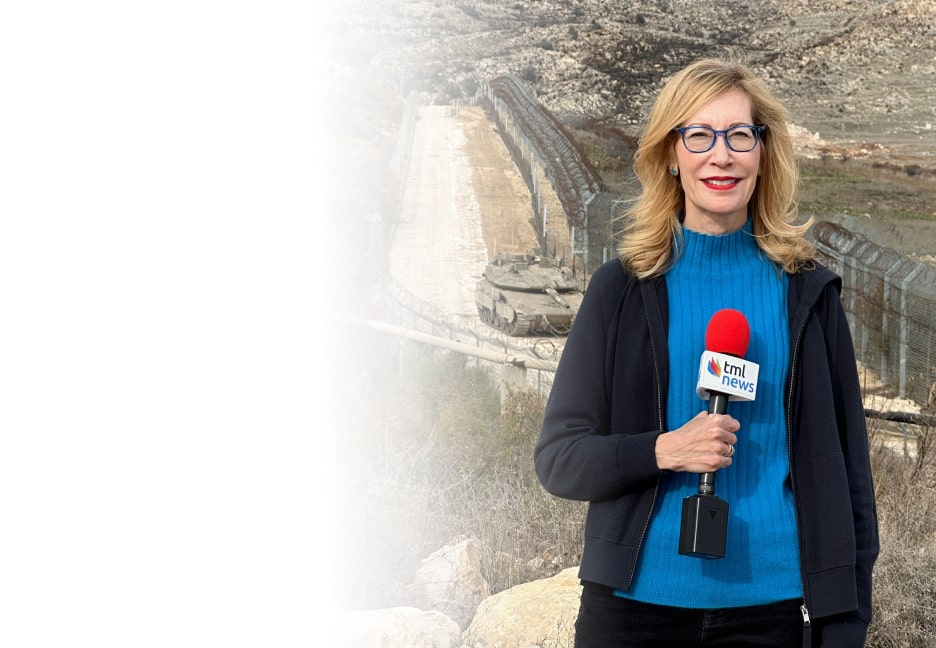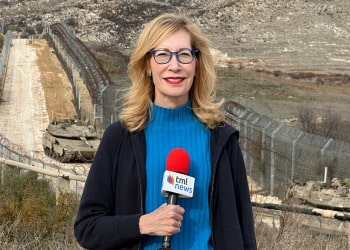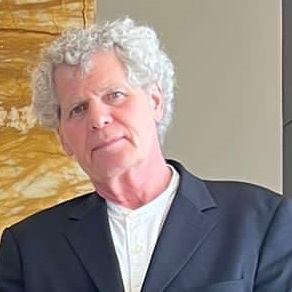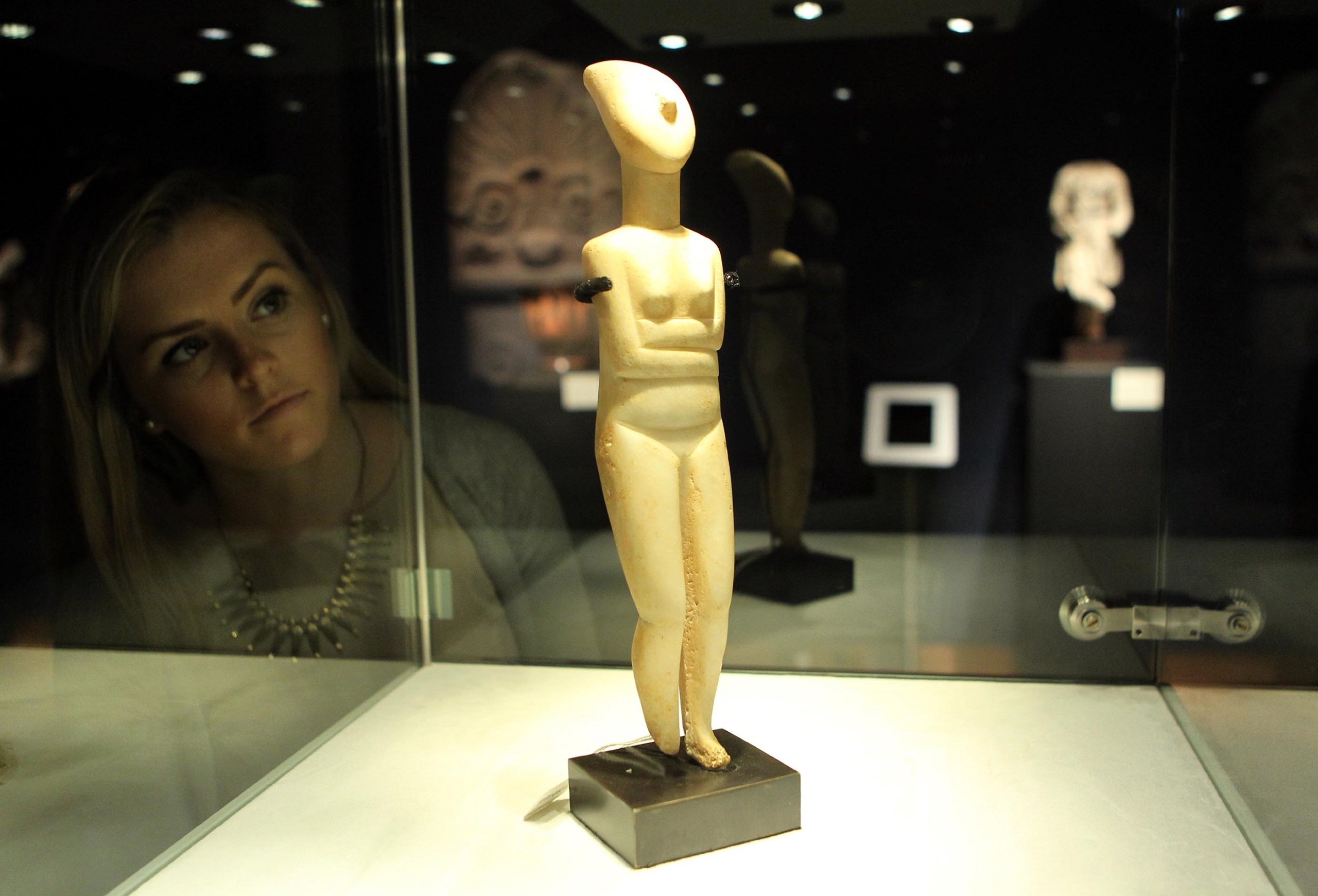The Marble Goddess
I’ve never been a law enforcement agent for any federal, state, or municipal government. The private investigator I worked for didn’t have enough NYPD moonlighters to cover all his part-time guard jobs, so he hired unemployed actors and independent contractors like me to pose as off-duty cops. No gun, no badge—just the look and the role.
I worked security for the Merrin Gallery of Ancient Art across from Trump Tower on Fifth Avenue. In December 1988, Ed Merrin purchased a 9-inch marble head of a goddess, sculpted 5,000 years ago in the Cyclades Islands of Greece. His winning bid of $2.09 million set a record for a classical antiquity at auction. The New York Times ran a front-page story, announcing that the Cycladic head would be on public display at the gallery.
Though the Merrin Gallery was the largest antiquities dealer in the world, I often went hours without seeing anyone but the staff. It was an easy job, but one Saturday morning, a crowd of gallerygoers waited for the doors to open at 10 a.m. I stationed myself 15 feet from the Cycladic head, standing straight with my hands clasped. I didn’t speak much, just directed people to the toilets with a nod and a grin—but never a smile. I was there for security.
The sculpture, bathed in dramatic lighting, sat under a detachable Plexiglass cover on a 4-foot-high lectern on a platform. Other Greek and Roman antiquities were displayed in showcases built into the walls, but the Cycladic head stood at the center of the gallery.
Two old men, mesmerized by the sculpture’s presentation and effect, shuffled forward. In the darkened room they didn’t see the platform stage and collided into it. Both lost balance and one guy tripped and fell over. His hand touched the lectern rocking it back and forth. “Oh My God!” someone screamed. I ran fast and jumped off the ground headfirst with my arms outstretched and caught the Plexiglass containing the sculpture right before it crashed to the floor.
The Marble Goddess was now inches from my face. That close I could see its faded paint tattooing and the layers of more than 50 centuries of encrusted patina. It was around a half-inch thick and didn’t weigh a lot. About 7 pounds in my estimation.
This holiday season, give to:
Truth and understanding
The Media Line's intrepid correspondents are in Israel, Gaza, Lebanon, Syria and Pakistan providing first-person reporting.
They all said they cover it.
We see it.
We report with just one agenda: the truth.


I’d just saved a 5,000-year-old irreplaceable artifact in front of witnesses on a Saturday afternoon.
Ed Merrin’s youngest son Sam and his son-in-law Moishe gently lifted the cover containing the Cycladic head from my grasp. Ed put on his museum gloves and retrieved the ancient masterpiece from inside it. “Ladies and gentlemen, we’re closing the gallery. Thank you for your cooperation.”
The reason the lectern had tipped over so easily was that the carpenters were in a rush to complete the installation and did not brace it securely to the platform stage.
“You not only saved the Cycladic head; you saved my reputation,” Merrin said, hugging me as he tried to hand me 10 $100 bills. I played humble, saying I couldn’t accept the money, as I was just doing my job. But Ed pressed the cash into my hand and closed my fist. “Thank you, Jack.”
The next week the private investigator offered me full-time employment as a security consultant/investigator. “Ed Merrin says you’re a hero. So, you want the job?”
For the next 15 years, I worked in security and investigations, both full-time and part-time, while pursuing my career as a documentary filmmaker and freelance journalist. I continued working at the gallery and became close with the Merrins and their staff, who treated me like family. My last security job there was for their biggest show yet, in October 1992: EGYPT.
The Merrin Gallery’s insurance for EGYPT required 24-hour onsite security. Retired NYPD officers covered the day shifts, and I took all the night shifts. Every night, I was locked inside until morning. I read a lot while guarding the ankhs, armor, jewelry, statues, and a young man’s painted portrait on his sarcophagus. I had wild dreams in that art tomb, but I always forgot them before rolling up my sleeping bag in the morning.
For 20 years, the Merrin Gallery sent me holiday thank you envelopes, even though I never did security for them again.
In April, I ran into Sam Merrin at a pro-Israel march at Columbia University. I was there to research an op-ed on the campus protests. I hadn’t spoken to him since I was injured in a Hamas suicide bombing while making a documentary in Tel Aviv in 2003—a trip arranged by Sam’s Israeli American brother-in-law, Moishe.
“Are you marching with us, Jack?”


